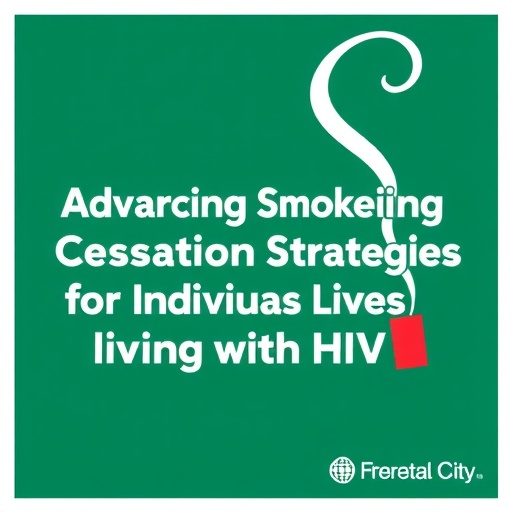Philadelphia, PA, May 25, 2017 – The human brain functions on a delicate balance of reinforcing positive behaviors and suppressing negative ones, which takes place in the dorsal striatum, a brain region critical for goal-directed behavior and implicated in drug and alcohol addiction.
According to a new study in Biological Psychiatry, two pathways in the dorsal striatum that regulate this process — the "Go" pathway, which hits the gas for rewarding behaviors, and the "No-Go" pathway, which hits the brakes — have opposite effects to control alcohol drinking behavior. Led by Dr. Jun Wang of Texas A&M Health Science Center, the study reports that alcohol-induced alterations in the signaling of these two pathways reinforce alcohol consumption, possibly leading to alcohol abuse or addiction.
Co-first authors Dr. Yifeng Cheng, Dr. Cathy Huang, and Dr. Tengfei Ma and colleagues trained mice to become heavy drinkers by repeated cycles of consumption and withdrawal of 20% alcohol — slightly higher than the average alcohol content in a glass of wine — and measured the effects on the balance of this delicate control of reward behavior.
"To the best of our knowledge, this article demonstrated, for the first time, that excessive alcohol consumption suppresses activity of the No-Go pathway," said Wang. By recording the activity of cells, the researchers found substantially increased GABA signaling, the primary inhibitory neurotransmitter of the brain, which quieted the No-Go pathway. Excessive alcohol consumption had the opposite effect in the Go pathway. These cells had increased glutamate signaling, the primary excitatory neurotransmitter in the brain, ramping up the Go signal.
The findings reveal detailed information on the mechanisms underlying control of alcohol consumption. "Both of these effects serve to reinforce alcohol consumption, leading to pathological excessive use of alcohol," wrote the authors.
Through manipulation of cells specific to each pathway to mimic either increased glutamatergic or GABAergic activity, Cheng and colleagues confirmed that inhibition of cells in the No-Go pathway and excitation of cells in the Go pathway promotes alcohol consumption. The findings indicate that either of these alterations is sufficient to drive alcohol drinking behavior.
The researchers dug deeper into the mechanism and found that activation of dopamine D2 receptors, the type that mediate the No-Go pathway, also reduced GABAergic activity and alcohol consumption. The regulation in GABAergic activity was mediated by a downstream target of D2 receptors called GSK3β, which altered the expression of GABA receptors in the cells.
"These findings identified potential therapeutic targets," said Wang, referring to GSK3β and GABA signaling in the No-Go pathway, which the researchers hope will aid development of new ways to treat alcohol abuse.
The study may have even broader implications, according to Dr. John Krystal, Editor of Biological Psychiatry. "The balance between signaling in the [Go] and [No-Go] pathways is likely to be a critical factor influencing motivated behavior, generally. This balance might be targeted to treat alcoholism, but also other addictions, mood disorders, and perhaps OCD," he said.
###
Notes for editors
The article is "Distinct Synaptic Strengthening of the Striatal Direct and Indirect Pathways Drives Alcohol Consumption," by Yifeng Cheng, Cathy C.Y. Huang, Tengfei Ma, Xiaoyan Wei, Xuehua Wang, Jiayi Lu, and Jun Wang (http://dx.doi.org/10.1016/j.biopsych.2016.05.016). It appears in Biological Psychiatry, volume 81, issue 11 (June 2017), published by Elsevier.
Copies of this paper are available to credentialed journalists upon request; please contact Rhiannon Bugno at [email protected] or +1 214 648 0880. Journalists wishing to interview the authors may contact Jun Wang, M.D., Ph.D., at [email protected].
The authors' affiliations and disclosures of financial and conflicts of interests are available in the article.
John H. Krystal, M.D., is Chairman of the Department of Psychiatry at the Yale University School of Medicine, Chief of Psychiatry at Yale-New Haven Hospital, and a research psychiatrist at the VA Connecticut Healthcare System. His disclosures of financial and conflicts of interests are available here.
About Biological Psychiatry
Biological Psychiatry is the official journal of the Society of Biological Psychiatry, whose purpose is to promote excellence in scientific research and education in fields that investigate the nature, causes, mechanisms and treatments of disorders of thought, emotion, or behavior. In accord with this mission, this peer-reviewed, rapid-publication, international journal publishes both basic and clinical contributions from all disciplines and research areas relevant to the pathophysiology and treatment of major psychiatric disorders.
The journal publishes novel results of original research which represent an important new lead or significant impact on the field, particularly those addressing genetic and environmental risk factors, neural circuitry and neurochemistry, and important new therapeutic approaches. Reviews and commentaries that focus on topics of current research and interest are also encouraged.
Biological Psychiatry is one of the most selective and highly cited journals in the field of psychiatric neuroscience. It is ranked 5th out of 140 Psychiatry titles and 11th out of 256 Neurosciences titles in the Journal Citations Reports® published by Thomson Reuters. The 2015 Impact Factor score for Biological Psychiatry is 11.212.
About Elsevier
Elsevier is a global information analytics company that helps institutions and professionals progress science, advance healthcare and improve performance for the benefit of humanity. Elsevier provides digital solutions and tools in the areas of strategic research management, R&D performance, clinical decision support, and professional education; including ScienceDirect, Scopus, ClinicalKey and Sherpath. Elsevier publishes over 2,500 digitized journals, including The Lancet and Cell, more than 35,000 e-book titles and many iconic reference works, including Gray's Anatomy. Elsevier is part of RELX Group, a global provider of information and analytics for professionals and business customers across industries. http://www.elsevier.com
Media Contact
Rhiannon Bugno
[email protected]
214-648-0880
@elseviernews
http://www.elsevier.com
############
Story Source: Materials provided by Scienmag




